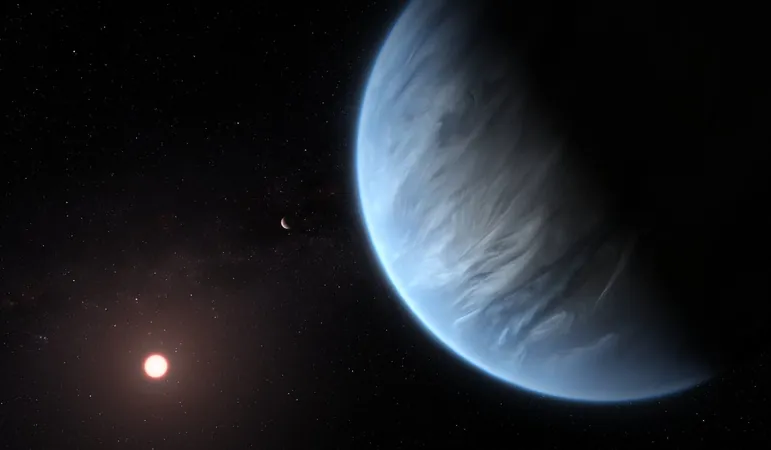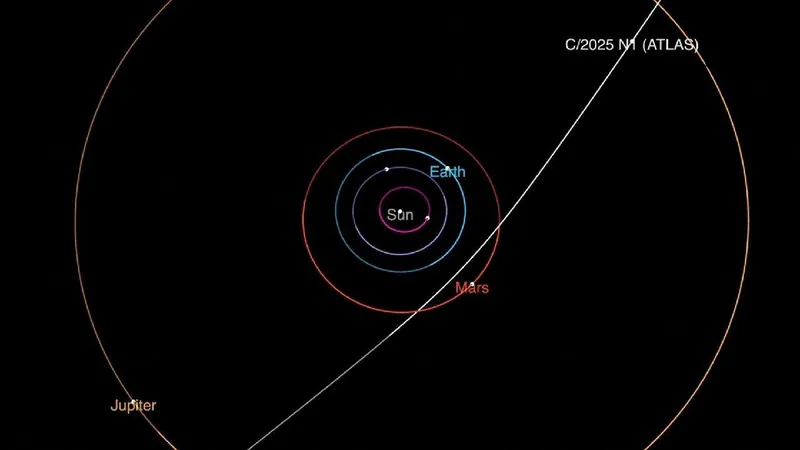
Before Galaxies: A Shocking Revelation About Early Habitable Worlds in the Cosmos!
2025-01-21
Author: Jia
Introduction
What if I told you that habitable planets might have existed before the very first galaxies? This groundbreaking notion has emerged from recent research that challenges long-standing astronomical beliefs.
The Traditional Cosmic Timeline
Traditionally, the accepted cosmic timeline suggested galaxies formed first, eventually giving rise to planets. However, new findings imply that rocky, habitable worlds could have formed surprisingly early in the Universe's history, even before galaxies came into being.
The Early Universe
In the early moments following the Big Bang, our Universe was a barren expanse composed almost entirely of hydrogen (approximately 75%) and helium (25%), with only trace amounts of heavier elements like lithium. For millions of years, there were no rocky planets—just a vast void. It wasn't until after the formation of the first stars and galaxies that the building blocks of life, comprised of heavier elements, began to circulate through space.
New Research Findings
Yet now, a study titled “Habitable Worlds Formed at Cosmic Dawn” is stirring the scientific pot. Led by Daniel Whalen from the Institute of Cosmology and Gravitation in the UK, this research—theoretical for now—reveals that habitable planets may indeed have formed during the Cosmic Dawn period, when the first stars were blazing into life.
Primordial Supernovae and Rocky Planets
The pivotal factor in this theory revolves around primordial supernovae—the universe’s earliest massive stars exploding in spectacular fashion. These enormous stellar giants, tracing back to an era marked by minimal metallic content, created the very elements necessary for rocky planet formation when they ended their short-lived existences in massive explosions.
Advanced Simulations
The research team employed advanced simulations using Enzo to model that after these explosive events, smaller stars and planetesimals began to form. Incredibly, these planetesimals could create rocky worlds capable of supporting life—a process hypothesized to have happened before the first galaxies formed.
The Role of Metallicity
One striking aspect of this study is its focus on a supernova that culminates in a core rich in metallicity due to the explosion. This sudden availability of elements allows for a rapid cooling of gas, setting the stage for the next generation of stars and ultimately the emergence of planetesimals—tiny building blocks of planets. The simulations found that one of these protostars, with about 0.3 solar masses, gave rise to planetesimals enriched in water, mimicking the conditions of our own solar system.
Revolutionary Implications
Imagine this: rocky planets forming amidst the cosmic chaos, long before galaxies were even a whisper in the vastness of space. If this groundbreaking hypothesis stands the test of time, it would revolutionize our understanding of cosmic evolution and the timeline of life as we know it.
Searching for Evidence
But how can we search for evidence of these ancient worlds? The researchers assert that these primordial planets could be detectable around ancient, metal-poor stars through future exoplanet surveys, igniting hopes for revolutionary discoveries in our galactic neighborhood.
Challenges Ahead
While this study opens up thrilling avenues, it also points to the immense challenges ahead. Detecting those elusive primordial supernovae remains a formidable task due to their incredible distance and faintness. Plus, the enigmatic characteristics of Population III stars—the progenitors of these supernovae—add layers of uncertainty to the narrative.
Conclusion
Despite these hurdles, the prospect of early habitable worlds could shape future explorations of the cosmos. As we continue to unravel the mysteries of the Universe, the potential for discovery seems limitless. What if we are on the brink of rewriting cosmic history? The excitement in the astronomical community is palpable as we inch closer to answering these fundamental questions. Stay tuned for the next chapter in our quest to understand the beginnings of life!


 Brasil (PT)
Brasil (PT)
 Canada (EN)
Canada (EN)
 Chile (ES)
Chile (ES)
 Česko (CS)
Česko (CS)
 대한민국 (KO)
대한민국 (KO)
 España (ES)
España (ES)
 France (FR)
France (FR)
 Hong Kong (EN)
Hong Kong (EN)
 Italia (IT)
Italia (IT)
 日本 (JA)
日本 (JA)
 Magyarország (HU)
Magyarország (HU)
 Norge (NO)
Norge (NO)
 Polska (PL)
Polska (PL)
 Schweiz (DE)
Schweiz (DE)
 Singapore (EN)
Singapore (EN)
 Sverige (SV)
Sverige (SV)
 Suomi (FI)
Suomi (FI)
 Türkiye (TR)
Türkiye (TR)
 الإمارات العربية المتحدة (AR)
الإمارات العربية المتحدة (AR)